Nationality American Role Cartoonist Name Floyd Gottfredson | Area(s) artist, writer | |
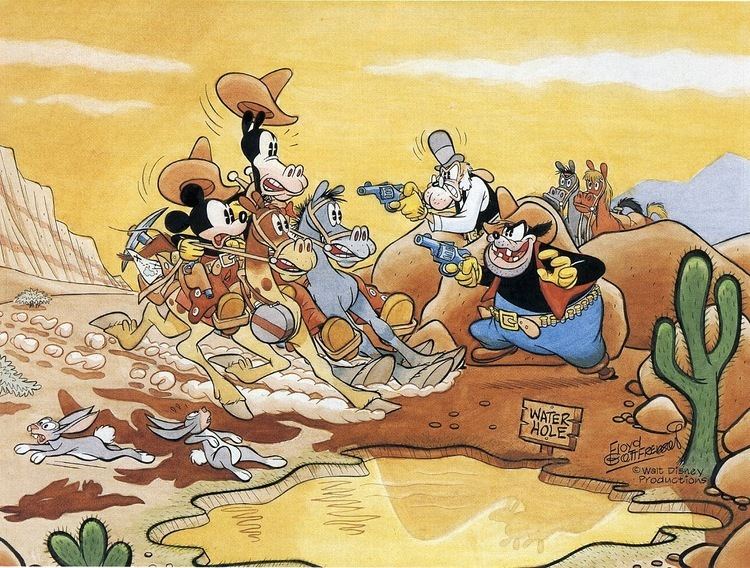 | ||
Books Walt Disney's Mickey M, Mickey Mouse and Friends: 3, Disney Comics: 75 Years of I, Walt Disney's Comics: J, Walt Disney's Mickey M Similar People | ||
Walt disney s mickey mouse vol 1 race to death valley by floyd gottfredson video preview
Arthur Floyd Gottfredson (May 5, 1905 – July 22, 1986) was an American cartoonist best known for his defining work on the Mickey Mouse comic strip. He has probably had the same impact on the Mickey Mouse comics as Carl Barks had on the Donald Duck comics. Two decades after his death, his memory was honored with the Disney Legends award in 2003 and induction into the Comic Book Hall of Fame in 2006.
Contents
- Walt disney s mickey mouse vol 1 race to death valley by floyd gottfredson video preview
- Mickey mouse box set vols 5 6 by floyd gottfredson video preview
- Early life and career
- Mickey Mouse
- Reprints and compilations
- Legacy
- References
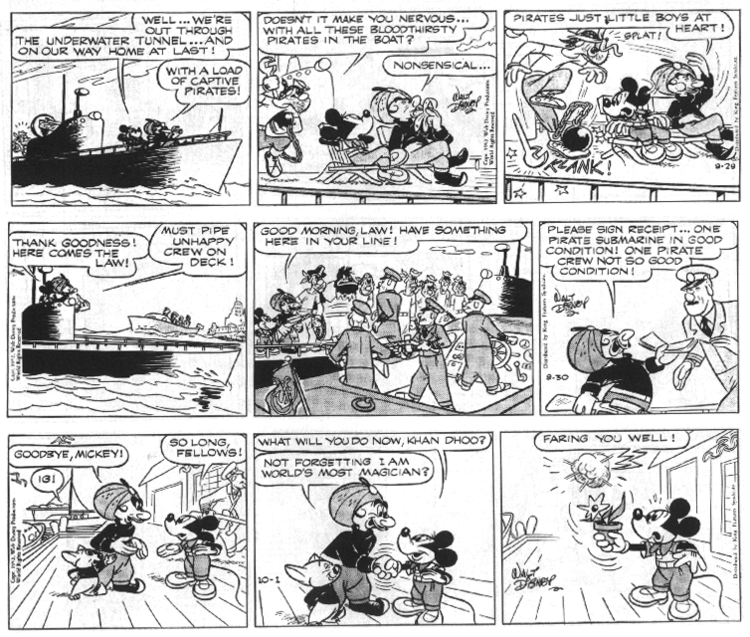
Mickey mouse box set vols 5 6 by floyd gottfredson video preview
Early life and career

Gottfredson was born into a large Mormon family in Kaysville, Utah in 1905. As a child, Floyd severely injured his arm in a hunting accident. Housebound during a long recovery, he became interested in cartooning and took several cartooning correspondence courses. Because of his injury, Gottfredson had to draw using his whole arm. In 1926, he took the Federal Schools of Illustrating and Cartooning's correspondence course, and by the late 1920s, he was drawing cartoons for trade magazines and the Salt Lake City Telegram newspaper.
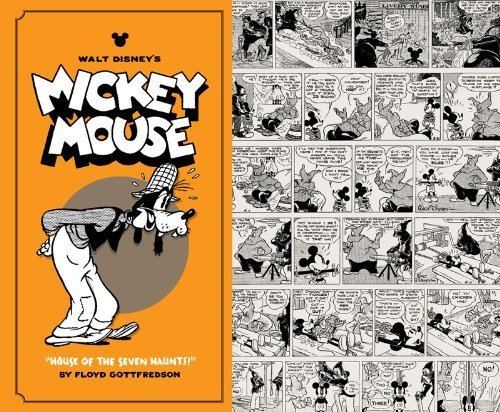
After achieving second place in a 1928 cartoon contest, the 23-year-old Gottfredson moved to Southern California with his wife and family, just before Christmas. At the time, there were seven major newspapers in the area, but he was unable to find work with any. One job he'd held in Utah, however, was as a movie projectionist and he found employment in that field in California. A year later, the movie theater where he had been working was torn down, resulting in another job search. On a whim, Gottfredson inquired with at Disney studios, which hired him the same day.
Mickey Mouse
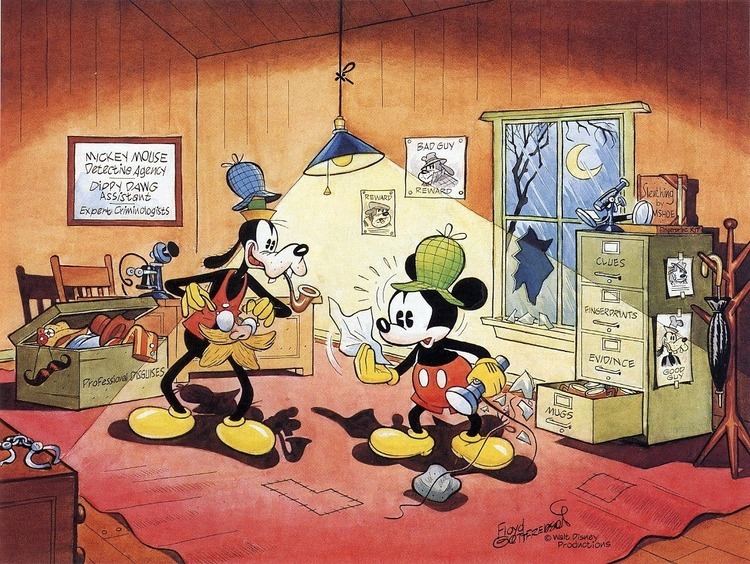
Walt Disney Productions hired Gottfredson as an apprentice animator and in-betweener on December 19, 1929. In April 1930 he started working on the four-month-old Mickey Mouse daily comic strip. It had originally been scripted by Walt Disney and drawn by Ub Iwerks who was succeeded by Win Smith (cartoonist). Iwerks quit Disney tried to hire Gottfredson at his studio when he left Disney, but Roy Disney wouldn't allow it. In May, Win Smith refused to write the strip, and Disney assigned Gottfredson to it, promising it would be only a temporary arrangement until someone else could be found to take over. Gottfredson continued to produce the Mickey Mouse strips for the next 45 years.
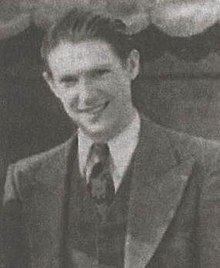
Gottfredson's first daily strip was published in newspapers on his 25th birthday, May 5, 1930. In January 1932 he began work on the newly inaugurated Mickey Mouse color Sunday strip which, in addition to the daily, he continued through mid-1938. Gottfredson headed the comics department at Disney 1930–1946, and was replaced by Frank Reilly.
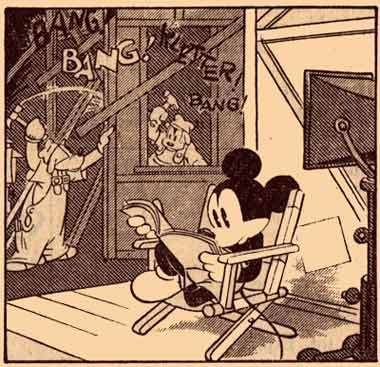
Originally, Gottfredson drew the strips alone, but in 1932 he pulled back to plotting the stories and doing the penciling. Scripts were written by Ted Osborne (1934–49), Merrill De Maris (1934–42), Bob Karp, Dick Shaw (1942–43), Bill Walsh (1943–64), Roy Williams (1964) and Del Connell (1968–82). There were a variety of inkers; inkers for the Sunday strips included Al Taliaferro and Ted Thwaitds in the 1930s, and Manual Gonzales until 1981; Taliaferro also inked daily strips. Gottfredson returned to inking daily strips himself in 1943.
From the beginning, the strips were parts of long continuing stories. These introduced characters such as the Phantom Blot, Eega Beeva, and the Bat Bandit, which Gottfredson created; Disney created Eli Squinch, Mickey's nephews, Morty and Ferdie Fieldmouse, and Sylvester Shyster, which were also introduced in the comic. Gottfredson plotted the continuities until Bill Walsh started writing the strip in 1943. The stories were always untitled. Titles were usually assigned later, when the strips or pages were reprinted in picture-books or comic books, which the artists had no influence on. Starting in the 1950s, Gottfredson and writer Bill Walsh were instructed to drop the storylines and do only daily gags. Gottfredson continued illustrating the daily strip until he retired on October 1, 1975.
Animation critic Geoffrey Blum said "Gottfredson's Mormon upbringing and his unflaggingly positive outlook made him the perfect keeper for this icon. Never complaining, chocking back his hurts... this is the ethic he brought to Mickey. Gottfredson's mouse combines the virtues of a good citizen and a good soldier."
Reprints and compilations
Gottfredson's Mickey strips were often collected in the 1930s and 1940s. Western Publishing's Big Little Book series based most of its Mickey volumes on the strip; Dell Publishing's Walt Disney's Comics and Stories serialized stories from the strip through 1948.
Modern-day American reprints began with "The Bar None Ranch" (1940) which appeared in Walt Disney Comics Digest #40 (1973). The following year "The Bat Bandit" (1934) appeared in a deluxe edition The Best of Walt Disney Comics. Abbeville Press' large size Best Comics anthologies in the late-1970s included two all-Gottfredson volumes (one headlined "Goofy"), though the stories were relettered and sometimes condensed. In 1980, Abbeville issued a small-size Best Comics series that included three all-Gottfredson volumes (again, one headlined "Goofy"), all of which reprinted stories from the earlier large-size editions. In 1986, Another Rainbow/Gladstone Publishing began a tradition of serializing Gottfredson stories in regular Disney monthly comic books, which has continued on and off to the present day. Gladstone also collected a number of Gottfredson's serials in the larger-size "comic albums" it issued during the 1980s; in 1990, Disney Comics issued "Mickey Mouse Outwits the Phantom Blot" (1939) in the same format.
In 2007 Gemstone Publishing announced The Floyd Gottfredson Library, a comprehensive Gottfredson edition. But the series was postponed, then canceled once Gemstone no longer had the Disney license. In 2011 Fantagraphics Books began publication of the series instead. The volumes of this Library published to date are:
- Walt Disney's Mickey Mouse: "Race to Death Valley" (1930–31 dailies; 2011) ISBN 978-1-60699-441-2
- Walt Disney's Mickey Mouse: "Trapped on Treasure Island" (1932–34 dailies; 2011) ISBN 978-1-60699-495-5
- Walt Disney's Mickey Mouse: "High Noon at Inferno Gulch" (1934–36 dailies; 2012) ISBN 978-1-60699-531-0
- Walt Disney's Mickey Mouse: "House of the Seven Haunts" (1936–38 dailies; 2012) ISBN 978-1-60699-575-4
- Walt Disney's Mickey Mouse: "Outwits the Phantom Blot" (1938-40 dailies; 2014) ISBN 978-1-60699-736-9
- Walt Disney's Mickey Mouse: "Lost in Lands of Long Ago" (1940-42 dailies; 2014) ISBN 978-1-60699-782-6
- Walt Disney's Mickey Mouse: "March of the Zombies" (1942-44 dailies; 2015) ISBN 978-1-60699-829-8
- Walt Disney's Mickey Mouse: "The Tomorrow Wars" (1944-46 dailies; 2015) ISBN 978-1-60699-868-7
- Walt Disney's Mickey Mouse: "Rise Of The Rhyming Man" (1946-48 dailies; 2016) ISBN 978-1-60699-931-8
David Gerstein (co-editor of the series) notes there are enough Gottfredson daily strips to make thirteen volumes but how many are published depends on sales.
Legacy
In the late 1970s and early 1980s, before his health deteriorated, Gottfredson gave interviews to many comics-oriented magazines as well as mainstream publications. The deluxe edition of the book Mickey Mouse in Color included a small record containing an audio interview with Gottfredson and Disney Donald Duck-comic book artist Carl Barks. During the 1970s Gotfredson attended the OrlandoCon and in 1983 the San Diego Comic Book convention and annual convention of The Mouse Club.
Between 1978 and 1983 Gottfredson did a total of 24 paintings commissioned by collector Malcolm Willits, inspired by the success of the paintings of the Disney ducks done by Carl Barks. The paintings depict various storylines from the classic period of the Mickey strip. A painting of a scene from a 1936 story of Mickey, Donald and Goofy investigating an alleged haunted house was used as the cover of Gladstone Album #26 (1989) which reprinted the story (titled "The Seven Ghosts").
Gottfredson's work had been printed in newspapers, magazines and comic books worldwide for over 50 years, but as a Disney employee, he was never allowed to sign it. Gottfredson's identity was finally revealed in the mid-1960s by fan Malcolm Willits. Subsequently, reprints of his Mickey Mouse strips in the 1970s gave him credit.
Floyd Gottfredson died at his home in Southern California at the age of 81. In 2006 Gottfredson was inducted into the Will Eisner Comic Industry Awards' Hall of Fame. He also was awarded an Inkpot Award in 1983.
Fellow Disney Legend Floyd Norman notes the drawing desk Gottfredson used today "occupies a corner in a special room at Disney's Publishing department in Burbank."
